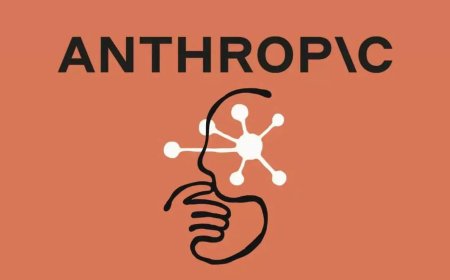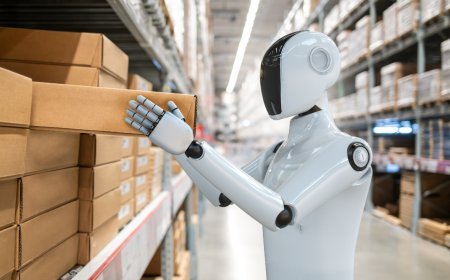Meet the AI Stuffed Animals Revolutionizing Playtime!

The rise of artificial intelligence has transformed numerous industries, but perhaps one of the most intriguing applications is its integration into children's toys. Recently, a wave of AI chatbots encased in adorable plush stuffed animals has emerged, promising to engage kids while offering a screen-free alternative to traditional digital entertainment. But the question remains: Are these cuddly companions a genuine substitute for screen time? The answer is complex and layered, laden with both potential and pitfalls.
As parents grapple with the challenges of raising children in an increasingly digital world, the allure of a plush, talking friend can be hard to resist. These AI-enhanced toys, often equipped with voice recognition and conversational abilities, are marketed as interactive companions that can educate and entertain without the need for screens. Brands like Woobo, My Special Aflac Duck, and the recently introduced Luvabella have made headlines by combining technology with the comforting appeal of a stuffed animal. They promise not only to engage children in meaningful conversations but also to foster social and emotional development.
One of the primary selling points of these plush AI chatbots is their ability to stimulate creativity and imagination while minimizing the adverse effects associated with excessive screen time. With alarming statistics revealing that children are spending an average of seven hours a day in front of screens, the push for alternatives is more urgent than ever. The plush toys position themselves as a solution, claiming to offer interactive storytelling, personalized responses, and even educational content, all while avoiding the distractions and overstimulation that screens often bring.
However, the question of whether these AI toys can truly replace screen time is not as straightforward as it may seem. While the idea of a cuddly companion that can engage a child's mind and emotions is certainly appealing, several factors must be considered. For one, the depth of interaction these toys can provide is often limited. While they can respond to basic prompts and engage in simple conversations, they lack the rich, immersive experiences that digital media can offer. In essence, the AI chatbots may provide a different kind of engagement, but not necessarily a more enriching one.
Moreover, the educational value of these toys is still under scrutiny. While some claim that they can teach children important social skills and emotional intelligence, research on their effectiveness is limited. Experts argue that while these toys can serve as a tool for learning, they might not replace the nuanced interactions that occur during real-life conversations with peers or caregivers. Children learn best through dynamic, face-to-face interactions, which can be more difficult to replicate with a plush AI companion.
Another critical aspect to consider is the potential for over-reliance on technology in children's lives. The presence of an AI chatbot, no matter how cute, could inadvertently encourage children to turn to technology for companionship rather than fostering real-world relationships. This issue raises concerns about the long-term implications of introducing AI toys into children's lives. Parents need to strike a balance between utilizing technology as a tool for learning and engagement while ensuring that it does not replace authentic human connections.
Privacy and data security are also pressing concerns when it comes to AI toys. Many of these plush companions require internet connectivity and often collect data to enhance their interactive features. Parents must be vigilant about understanding what information is being collected and how it is being used. The potential for data breaches or misuse of sensitive information poses a significant risk, particularly in an age where children's data protection is paramount.
Despite these challenges, there is undeniable potential in the fusion of AI with traditional toys. The ability of these plush companions to respond to children's emotions and adjust their interactions accordingly can make them valuable for certain educational purposes. For example, they can be programmed to help children with learning challenges or emotional difficulties, providing a level of support that may not be readily available in their immediate environment.
Furthermore, the appeal of these toys lies in their ability to create a bridge between the physical and digital worlds. While they may not replace screen time outright, they can serve as a stepping stone, allowing children to engage with technology in a more tactile, less overwhelming way. The plush format can help ease children into the world of AI and technology, potentially preparing them for a future where such interactions become increasingly commonplace.
In conclusion, while AI chatbots integrated into plush toys may not be a perfect substitute for screen time, they offer a unique blend of comfort, interactivity, and engagement that could benefit children in specific contexts. As technology continues to evolve, it will be crucial for parents to remain informed and discerning about the tools they introduce into their children's lives. Striking a balance between screen time, real-life interactions, and the innovative possibilities presented by AI will be essential for nurturing well-rounded, emotionally intelligent children.
Ultimately, the success of these AI plush companions will depend on how they are integrated into a child's daily life. As with any technology, moderation and thoughtful engagement will be key. They may not replace the charm of a bedtime story read by a parent or the laughter shared with friends, but they can certainly play a role in a child's development, provided they are used wisely and responsibly.
What's Your Reaction?
 Like
0
Like
0
 Dislike
0
Dislike
0
 Love
0
Love
0
 Funny
0
Funny
0
 Angry
0
Angry
0
 Sad
0
Sad
0
 Wow
0
Wow
0






























